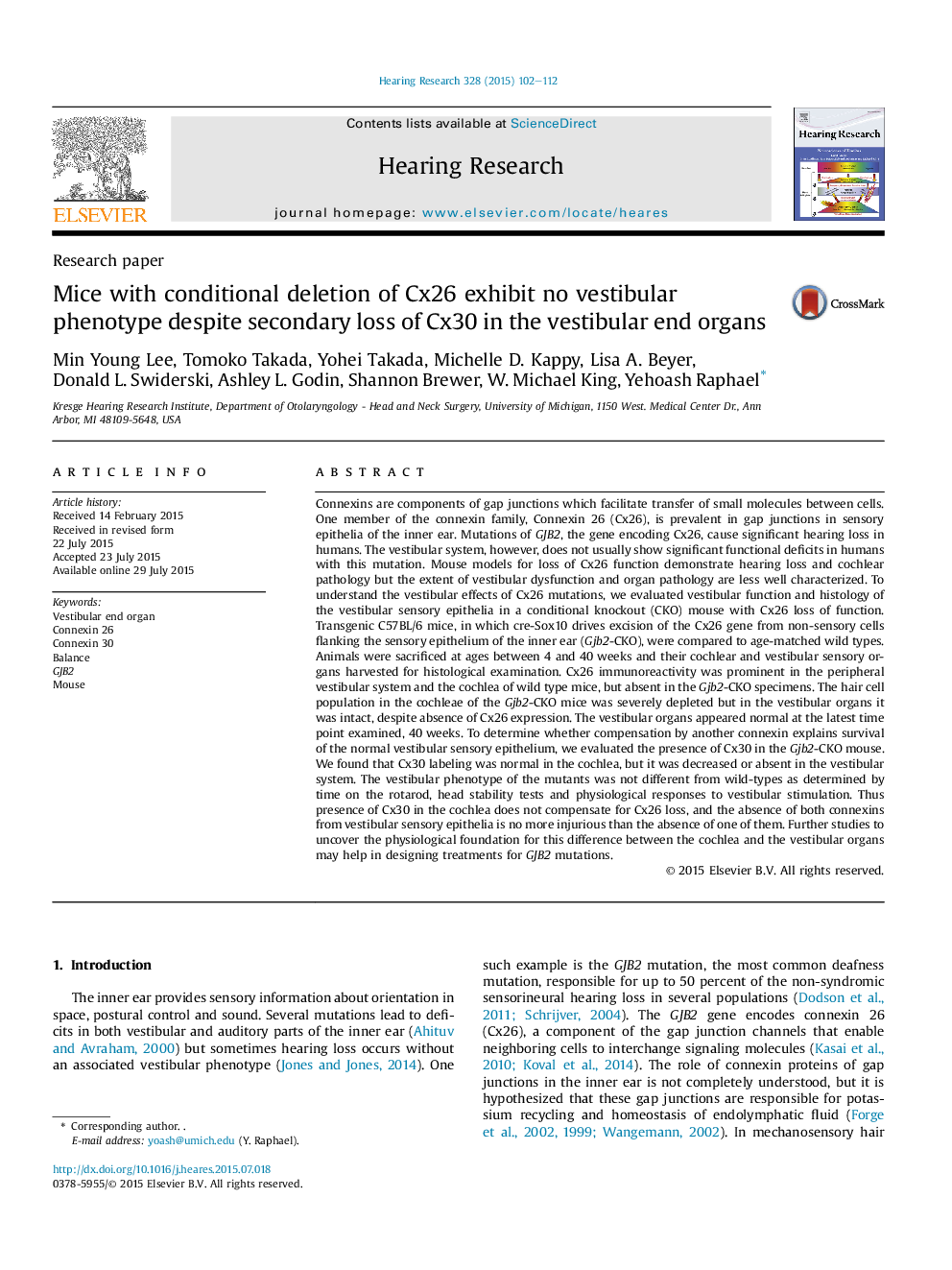| کد مقاله | کد نشریه | سال انتشار | مقاله انگلیسی | نسخه تمام متن |
|---|---|---|---|---|
| 6287284 | 1615572 | 2015 | 11 صفحه PDF | دانلود رایگان |

- In Gjb2-CKO mice designed to exclude Cx26 in the cochlea Cx26 is absent also in the vestibular system.
- Loss of Cx26 resulted in secondary loss of Cx30 in the vestibular system.
- Despite the loss of both connexins, vestibular structure and function appear intact.
Connexins are components of gap junctions which facilitate transfer of small molecules between cells. One member of the connexin family, Connexin 26 (Cx26), is prevalent in gap junctions in sensory epithelia of the inner ear. Mutations of GJB2, the gene encoding Cx26, cause significant hearing loss in humans. The vestibular system, however, does not usually show significant functional deficits in humans with this mutation. Mouse models for loss of Cx26 function demonstrate hearing loss and cochlear pathology but the extent of vestibular dysfunction and organ pathology are less well characterized. To understand the vestibular effects of Cx26 mutations, we evaluated vestibular function and histology of the vestibular sensory epithelia in a conditional knockout (CKO) mouse with Cx26 loss of function. Transgenic C57BL/6 mice, in which cre-Sox10 drives excision of the Cx26 gene from non-sensory cells flanking the sensory epithelium of the inner ear (Gjb2-CKO), were compared to age-matched wild types. Animals were sacrificed at ages between 4 and 40 weeks and their cochlear and vestibular sensory organs harvested for histological examination. Cx26 immunoreactivity was prominent in the peripheral vestibular system and the cochlea of wild type mice, but absent in the Gjb2-CKO specimens. The hair cell population in the cochleae of the Gjb2-CKO mice was severely depleted but in the vestibular organs it was intact, despite absence of Cx26 expression. The vestibular organs appeared normal at the latest time point examined, 40 weeks. To determine whether compensation by another connexin explains survival of the normal vestibular sensory epithelium, we evaluated the presence of Cx30 in the Gjb2-CKO mouse. We found that Cx30 labeling was normal in the cochlea, but it was decreased or absent in the vestibular system. The vestibular phenotype of the mutants was not different from wild-types as determined by time on the rotarod, head stability tests and physiological responses to vestibular stimulation. Thus presence of Cx30 in the cochlea does not compensate for Cx26 loss, and the absence of both connexins from vestibular sensory epithelia is no more injurious than the absence of one of them. Further studies to uncover the physiological foundation for this difference between the cochlea and the vestibular organs may help in designing treatments for GJB2 mutations.
328
Journal: Hearing Research - Volume 328, October 2015, Pages 102-112